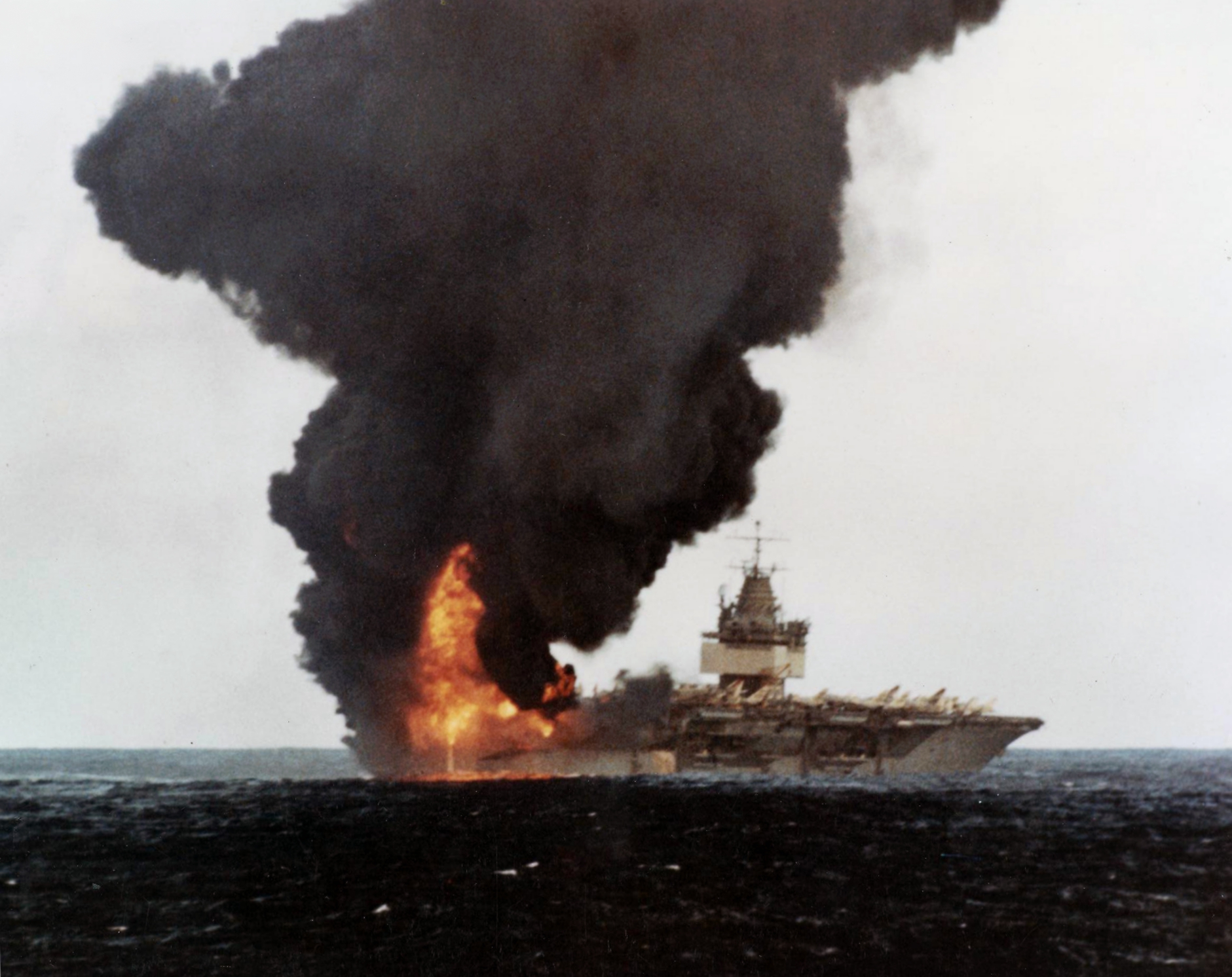We have different definitions of the word fatal. To me very inhibiting and accident prone is fatal since it could cost lives and you could end up even losing the ship.
Then, by that definition, every carrier has "fatal" flaws because they all can have accidents that cause fatalities and potentially lead to the loss of the vessel...and not due to any enemy action. The US has suffered such accidents and you cannot design them out because you are dealing with loading jet aircraft with high octane fuel and explosive ordinance that at anytime, anywhere, no matter what the deck layout is, can suffer an accident that can cause such incidents. (Note: the US Foresstal and the US Enterprise accidents)
1967 USS Forrestal Accident and fire - 134 dead, 161 injured
USS Enterprise accident and fire - 27 killed, 314 injured
Franklin said:
Those are mainly VSTOL carriers with aircraft like the Sea Harriers or the Yak-38 that can land vertically.
Well, actually that is not what I meant. The US operated World War II Essex class carriers clear into the 1970s and it was not until the mid to late 1950s that they began receiving modernizations (very large and expensive refits of the time to modernize them) which included angle decks and in-deck elevators moved to the deck edge fore and aft.
Until then, the US operated jet fighters off of aircraft carriers that had similar arrangements with elevators that impeded deck operations.
Franklin said:
Well since the INS Viraat is quickly losing her air wing due to attrition. The INS Vikramaditya will become the flag ship in the IN for years to come. The first IAC is not going to be commissioned in to IN at least untill 2016 or 2017.
That is correct. But even if they had more Harriers, the fact that the Vikramaditya can launch and recover Mig-29Ks for fleet defense and for strike missions means she is a far more capable carrier than the older vessel with the Harriers.
Finally, the Mig29K has a max loadout weight of 18,500 kg (40,500 lbs). Clearly, they will be loading the aircraft with its armament and most fuel on deck (otherwise the 30K lb lift could not handle them).
But the max ordinance is 6,500 kg and the max fuel on the Mig-29K has been increased to 4,560 kg. This means fuel and ordinace that can be added to the aircraft equals 11,060 kg.
Subtracting that from the 18,500 kg total, you end up with a dry/empty weight of the Mig29K of about m 7,440 kg or about 16,500 lbs...which means, in an emergency, empty Mig-29Ks could be moved to the deck on the 20k lb lift.
The other Mig-29Ks in the airwing, minus the ones preparing for take off (let's say up to six) and the 9 parked fore and aft of the Island, would be below in the hanger.
So, if they had 24 Mig-29Ks on board in some kind of maximum Mig-29K count, they would have to have 9 of them below deck.
If they embarked with 20 Mig-29Ks, then they would have to have five of them below deck.
With 15 aboard, they could all be on deck at once being loaded up, and preparing for take-off.
franklin said:
PS that's the Admiral Kuznetsov. The island is all the way to the side and it's flying the Russian Navy flag. You can see the weapons in the corner includes a VLS system that the Vikramaditya doesn't have.
Correct and my bad. Got the wrong pic on that post, it belongs on my Kuznetsov page. I removed it from the post above. Thanks for noticing that.




